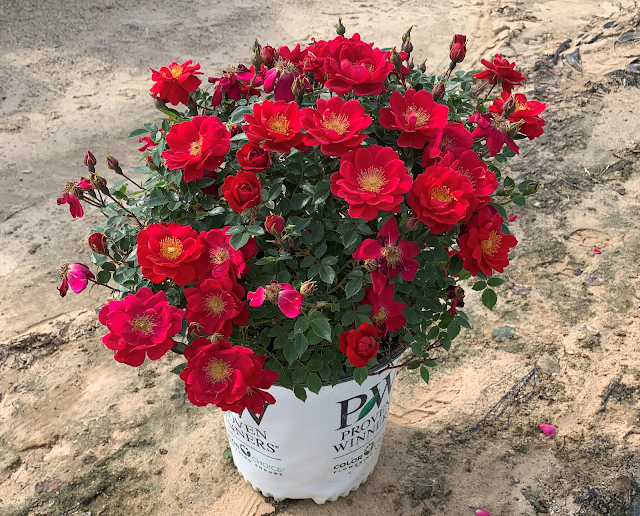
Regular people look at plants quite differently than your typical horticulturist. That’s why I get a kick out of reading comments by Mike Dirr where he gushes about the attractiveness of the bark on some particular shrub. As if the typical homeowner is going to actually crouch down under a shrub and exclaim “Wow, now that’s awesome bark.” From my experience, the public does not get overly excited about bark (that is unless it has in-your-face bark like a Paper Bark Birch).
I get excited about bark, but I have to remind myself that most people won’t even notice. Hydrangea macrophylla ‘Nigra’ (Syn.: H. macrophylla 'Mandshurica') is a good example. It’s a cool plant. I like it but it’s never been a big seller. It has very attractive back stems, but the feature is obscured by the leaves, so few people ever notice.
When I first saw the Abracadabra Series of Hydrangea in Germany, I got so excited I could hardly contain myself. That’s because, for the first time ever, I actually felt that the average shopper could get excited about bark. What makes these plants so unique is that they have internodes (the spacing between the leaves) that are large enough to give you a real good view of the dark, glossy black stems. Of course it doesn’t hurt that the plants also have funky blooms that are both massive and richly colored. I honestly think that these plants have a cool factor that will make them as popular as lucky bamboo. As a pot plant they would make great centerpiece on a table. You’d actually be able to see the person across the table from you.
Abracadabra Star has massive lace-cap blooms with hot pink flowers. The stems are straight and strong.
I get excited about bark, but I have to remind myself that most people won’t even notice. Hydrangea macrophylla ‘Nigra’ (Syn.: H. macrophylla 'Mandshurica') is a good example. It’s a cool plant. I like it but it’s never been a big seller. It has very attractive back stems, but the feature is obscured by the leaves, so few people ever notice.
When I first saw the Abracadabra Series of Hydrangea in Germany, I got so excited I could hardly contain myself. That’s because, for the first time ever, I actually felt that the average shopper could get excited about bark. What makes these plants so unique is that they have internodes (the spacing between the leaves) that are large enough to give you a real good view of the dark, glossy black stems. Of course it doesn’t hurt that the plants also have funky blooms that are both massive and richly colored. I honestly think that these plants have a cool factor that will make them as popular as lucky bamboo. As a pot plant they would make great centerpiece on a table. You’d actually be able to see the person across the table from you.
Abracadabra Star has massive lace-cap blooms with hot pink flowers. The stems are straight and strong.

Abracadabra Orb is a mop-head hydrangea. The flowers emerge a blend of peach and green then mature to a deep pink. As with Abracadabra Star, the bloom size is massive. The sepals are thick in texture and again are held up on strong, upright stems.



















 This is a greenhouse bench filled with Lo & Behold
This is a greenhouse bench filled with Lo & Behold 





 Pretty Much Picasso petunia
Pretty Much Picasso petunia 








